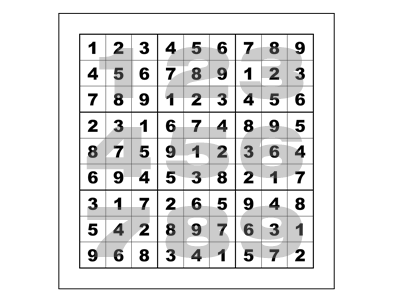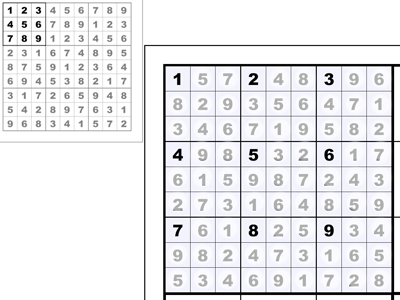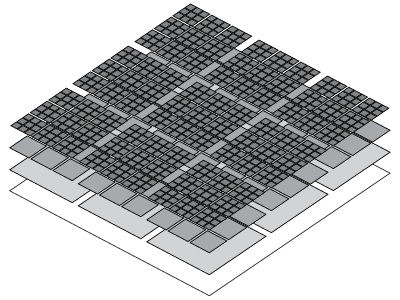
I enjoy Sudoku puzzles as diversions. I found a blog post by Peter Norvig where he describes a Sudoku Solver he wrote in Python. I translated his algorithm to ActionScript 3, and built a program that drills down into a series of unique but related Sudoku puzzles.

A Sudoku puzzle is a 9 by 9 grid, subdivided into nine 3 by 3 regions (these regions are labeled in the image with large grey numbers). The puzzle is considered solved when each row, column, and region contains the numerals 1 through 9 exactly once.
My Fractal Sudoku is really just a proof-of-concept, considering that all of the puzzles are already solved by the program. The user is able to navigate through these solved puzzles.

This image shows the original puzzle in the upper-left corner. If the user were to click in the first region of this puzzle, a new puzzle would be created. Each 3 by 3 region of the new puzzle is related to the clicked region of the original puzzle.
Notice that the upper left square of each 3 by 3 region has been seeded with the number from the corresponding square of the original puzzle.

Every click progresses one level deeper into the puzzles. At level zero, there is only 1 puzzle. This level zero puzzle has 9 regions, so at level one there are 9 more puzzles.
Each of the 9 level one puzzles has its own 9 regions to expand, so at level two there are 81 more puzzles. Each of level two's 81 puzzles has 9 regions to expand, so at level three there are 729 more puzzles. It quickly becomes overwhelming; in these first four levels there are 1 + 9 + 81 + 729 = 820 puzzles!